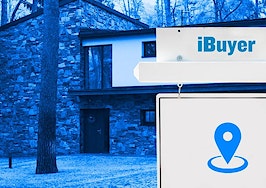This post has been republished with permission from Mike DelPrete.
In my previous analysis, I suggested that iBuyers can get into trouble if they overpay for too many houses in a cooling market. This results in a growing inventory of overpriced houses that are difficult to sell, which is exactly the problem Zillow now faces.
In Phoenix, Zillow’s 250 current listings are priced at a median of 6.2 percent below what they were bought for (the “buy-to-list” metric).

(As a point of reference, iBuyer median home price appreciation — buy-to-sell — was around 8 percent earlier this year. In Phoenix, it was around 10 percent just a few months ago.)
Put another way, Zillow’s Phoenix inventory is currently priced at a median of $29,000 less than the buy price. This is a direct result of price reductions on 182 listings of an average of $41,000.

The trend is similar — but not as bad — in other markets. In Atlanta, Zillow’s median buy-to-list is still positive but down considerably from past months (and again worse when compared to Opendoor).

Buy-to-list is a metric that should be, and up until recently was, positive. On average, being able to sell a house for no less than it was bought for is table stakes for iBuying. A loss of $29,000 on each house — before any other expenses are accounted for — represents a catastrophic failure in pricing.
Perspective
There are a number of ways to read the situation. Yes, Zillow screwed up. Yes, Opendoor looks impressive in comparison. And yes, there are challenges with iBuying in a cooling market. In the microcosm of one iBuyer, in one market, in one month, the situation looks dire.
But it won’t stop Zillow; the loss, relative to its total investment in iBuying, is small. Sold today, Zillow’s Phoenix listings would incur a loss of $7 million. That’s a fraction of Zillow’s total iBuying losses of this year and last.

This is a company that is willing and able to lose hundreds of millions of dollars to invest in and build a new business. A $7 million loss in one market during one month will be a distant memory by this time next year.
The iBuyer investment case for Zillow, Opendoor and others is clear: This is an opportunity measured in trillions, not billions, of dollars. Within the context of long-term industry disruption, this may simply be an embarrassing detour on Zillow’s inexorable march to transform real estate.
Writer’s note: The data collection for this analysis came together quickly with the help of several friends. Thank you to Rich Mackall, Oscar Castaneda, Sarah Perkins and Divvy Homes.
Mike DelPrete is a strategic adviser and global expert in real estate tech, including Zavvie, an iBuyer offer aggregator. Connect with him on LinkedIn.













